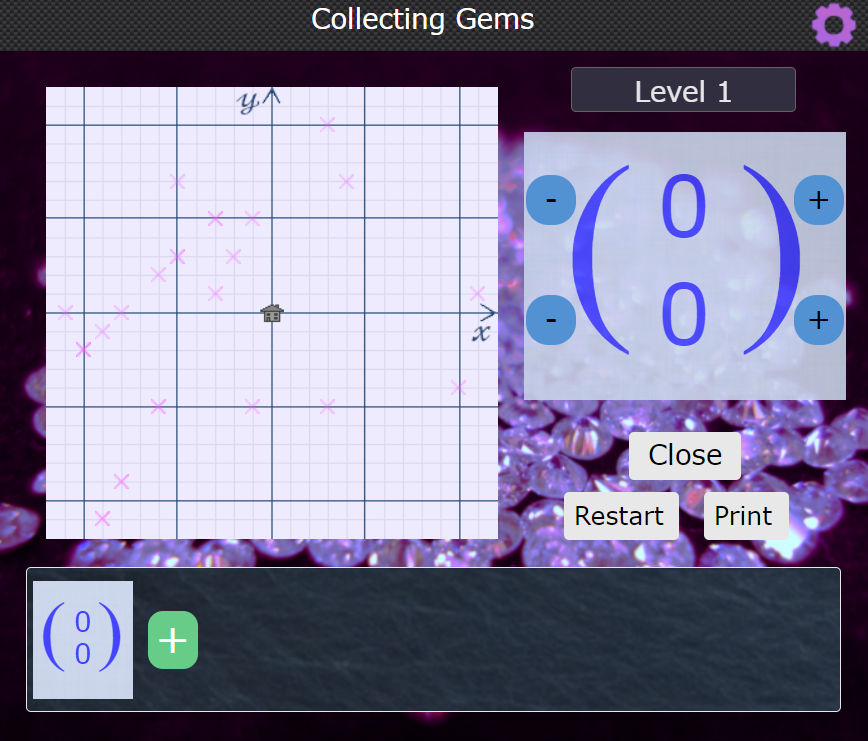Skip over navigation



Or search by topic
Number and algebra
Geometry and measure
Probability and statistics
Working mathematically
Advanced mathematics
For younger learners
Vector Gem Collector
Age 14 to 18
Challenge Level 





- Game
- Getting Started
- Teachers' Resources
To add a new vector, click on the green + sign.
Then click on the vector to edit it.
You can click on the + and - signs to increase or decrease the two components of the vector - see the screenshot below:

Once you have chosen all your vectors, click on "Close" and then click "Get a score" to find out how many gems you have collected!
Don't forget that your final vector needs to take you back home.
Then click on the vector to edit it.
You can click on the + and - signs to increase or decrease the two components of the vector - see the screenshot below:

Once you have chosen all your vectors, click on "Close" and then click "Get a score" to find out how many gems you have collected!
Don't forget that your final vector needs to take you back home.
You may also like

Pros and Cons
If p is a positive integer and q is a negative integer, which of these expressions is the greatest?
Connect Three
In this game the winner is the first to complete a row of three. Are some squares easier to land on than others?
Minus One Two Three
Substitute -1, -2 or -3, into an algebraic expression and you'll get three results. Is it possible to tell in advance which of those three will be the largest ?

